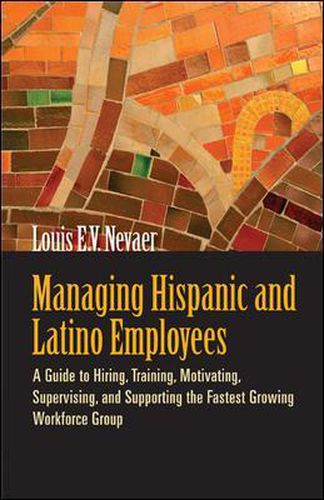Readings Newsletter
Become a Readings Member to make your shopping experience even easier.
Sign in or sign up for free!
You’re not far away from qualifying for FREE standard shipping within Australia
You’ve qualified for FREE standard shipping within Australia
The cart is loading…






Hispanics make up the largest and fastest-growing minority group in the United States. Organizations that don’t know how to make them feel comfortable, recognized, and rewarded risk losing access to this important source of talent and innovation. Drawing on his own ethnic background and years of experience as director of the organization Hispanic Economics, Louis Nevaer identifies elements unique to the Hispanic worldview that often result in behaviors, beliefs, and expectations very different from, and sometimes seemingly at odds with, those of non-Hispanics. He also describes differences within the Hispanic community-such as between U.S.-born and immigrant Hispanics, and between people from different parts of the Hispanic world-that have a huge, and often unrecognized, impact on how workers interact with each other as well as with non-Hispanics. Through a wealth of examples, Nevaer shows how to develop Hispanic-friendly approaches to every aspect of the modern workplace, from recruitment, retention, and evaluation to training, mentoring, and labor relations.
$9.00 standard shipping within Australia
FREE standard shipping within Australia for orders over $100.00
Express & International shipping calculated at checkout
Hispanics make up the largest and fastest-growing minority group in the United States. Organizations that don’t know how to make them feel comfortable, recognized, and rewarded risk losing access to this important source of talent and innovation. Drawing on his own ethnic background and years of experience as director of the organization Hispanic Economics, Louis Nevaer identifies elements unique to the Hispanic worldview that often result in behaviors, beliefs, and expectations very different from, and sometimes seemingly at odds with, those of non-Hispanics. He also describes differences within the Hispanic community-such as between U.S.-born and immigrant Hispanics, and between people from different parts of the Hispanic world-that have a huge, and often unrecognized, impact on how workers interact with each other as well as with non-Hispanics. Through a wealth of examples, Nevaer shows how to develop Hispanic-friendly approaches to every aspect of the modern workplace, from recruitment, retention, and evaluation to training, mentoring, and labor relations.